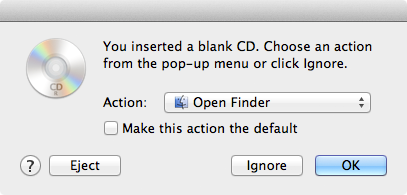
Unlike most recordable CDs, DVDs and Blu-rays, which store data by making microscopic color changes to their rings, an M-DISC writing surface becomes physically pitted with real grooves during the burning process. $78 model burns DVDs, $135 model burns DVDs + Blu-RaysĮven if the name’s not familiar, M-DISC is based upon fundamentally sound technologies.M-DISCs play in standard DVD or Blu-ray Disc players.M-DISCs are archival-quality DVDs or Blu-ray Discs that can be burned at home.
#DVD BURN FOR MAC OS X PRO#
Each version of Mercury Pro comes bundled with a heavy-duty Mac-matching external enclosure, cables, and software, while the Blu-ray model also includes two blank BD-R discs to get you started… The basic $78 model burns less expensive, lower-capacity M-DISC DVDs, while the superior $135 version can also burn higher-capacity M-DISC Blu-rays, as well as burning and playing regular Blu-ray Discs. OWC’s new Mercury Pro ($78/$135) external drives are designed to help Mac owners burn M-DISCs. Separately, Millenniata debuted M-DISC, an archival disc technology that lets anyone burn DVDs or Blu-ray Discs guaranteed to last “centuries.” While M-DISCs must be written using new burners, they can be read by traditional DVD and Blu-ray players, ensuring broad compatibility. “BDXL” Blu-ray Discs can now store up to 128GB of data, and Ultra HD Blu-ray Discs can hold full-length movies for 4K Ultra HDTVs.


Today, except for a single MacBook Pro model that hasn’t been updated since 2012, Macs are physically too thin to accommodate optical drives, and that’s not going to change any time soon.īut optical disc technology has soldiered on, adding new features to hook serious video and photo fans.

Citing Blu-ray Disc licensing issues and the growing popularity of Internet streaming, the company was able to leave CD, DVD and Blu-ray drives out of new Macs without suffering any drop in sales. Apple gave up on optical drives several years ago.


 0 kommentar(er)
0 kommentar(er)
